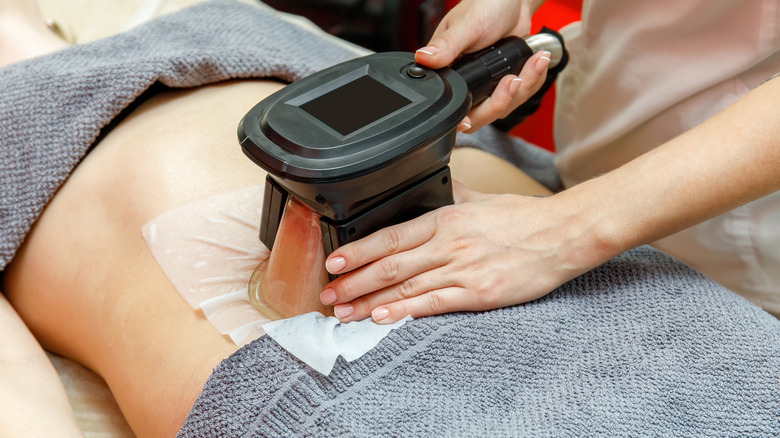The Odd Way That CoolSculpting Originated
When Khloe Kardashian's transformed body graced the covers of New Beauty in 2015, she told the magazine that one of her secrets was CoolSculpting, a non-invasive procedure that targets stubborn fat by freezing it. Since then, it seems like CoolSculpting has popped up everywhere. Between 2017 and 2018, locations offering the treatment grew by 76% after Allergan acquired the company that founded the body-transforming technology, per The Business of Business.
Now, celebrities like Kris Jenner, Molly Sims, and Gretchen Rossi swear by the patented procedure, according to E! News. The process is so sought after that one dermatology clinic claimed to have performed 7 million CoolSculpting treatments worldwide. However, it's important to note that this is not a weight-loss technique. Mary Lou, a cosmetic consultant, told E! News, "This is for someone who is already healthy, but has stubborn, problem areas that they can't seem to get rid of in the gym."
While the cosmetic procedure has become mainstream, the origins of it are unconventional. Read on to know more about it.
CoolSculpting's origins lie in a popsicle
CoolSculpting (or cryolipolysis) is based on the principal of freezing fat cells until at least 20% to 25% of them melt away, per Mayo Clinic. Most people see results in a few weeks. "Fat is more temperature-sensitive than your skin," plastic surgeon Jason Roostaeian, MD, told Vogue about how CoolSculpting works. "It goes through the cell death process before your skin does."
The procedure was approved for the stomach in 2012 by the FDA, per Sculpt MD, but it all began with two Harvard scientists noticing the effects a popsicle has on the mouth. According to Westlake Dermatology, Dr. Rox Anderson and Dr. Dieter Manstein were aware of "'popsicle panniculitis,' which has to do with the loss of cheek fat that occurs while sucking on a frozen popsicle." Through trial and error, the doctors also discovered that other body tissues and nerves weren't as sensitive to freezing as fat was, which led to the idea of isolated fat loss. Thus, cryolipolysis was born.
If you're planning to get cool-sculpted, make sure you speak to your dermatologist, do your research, and maybe reference this article to know more about it.

